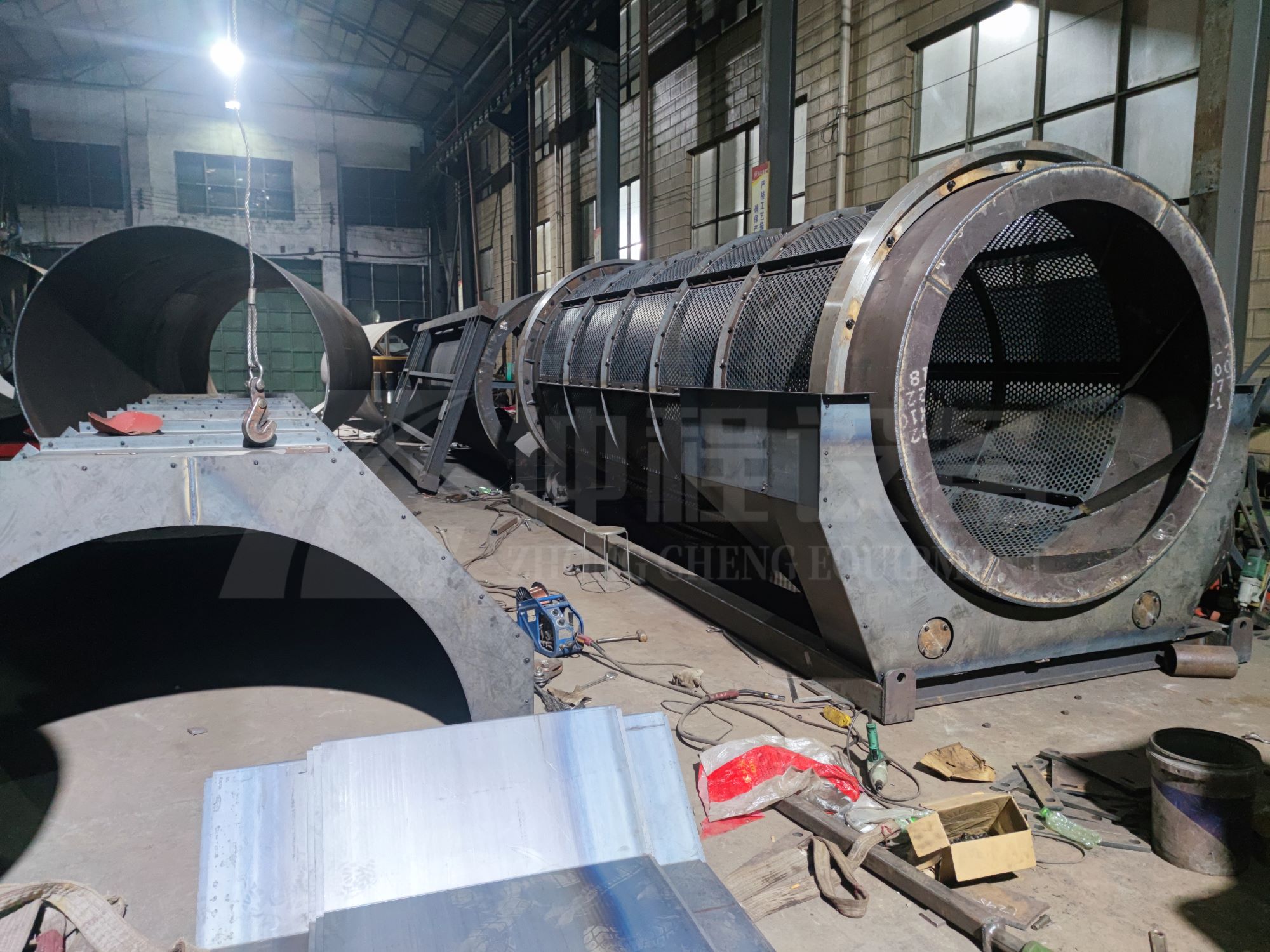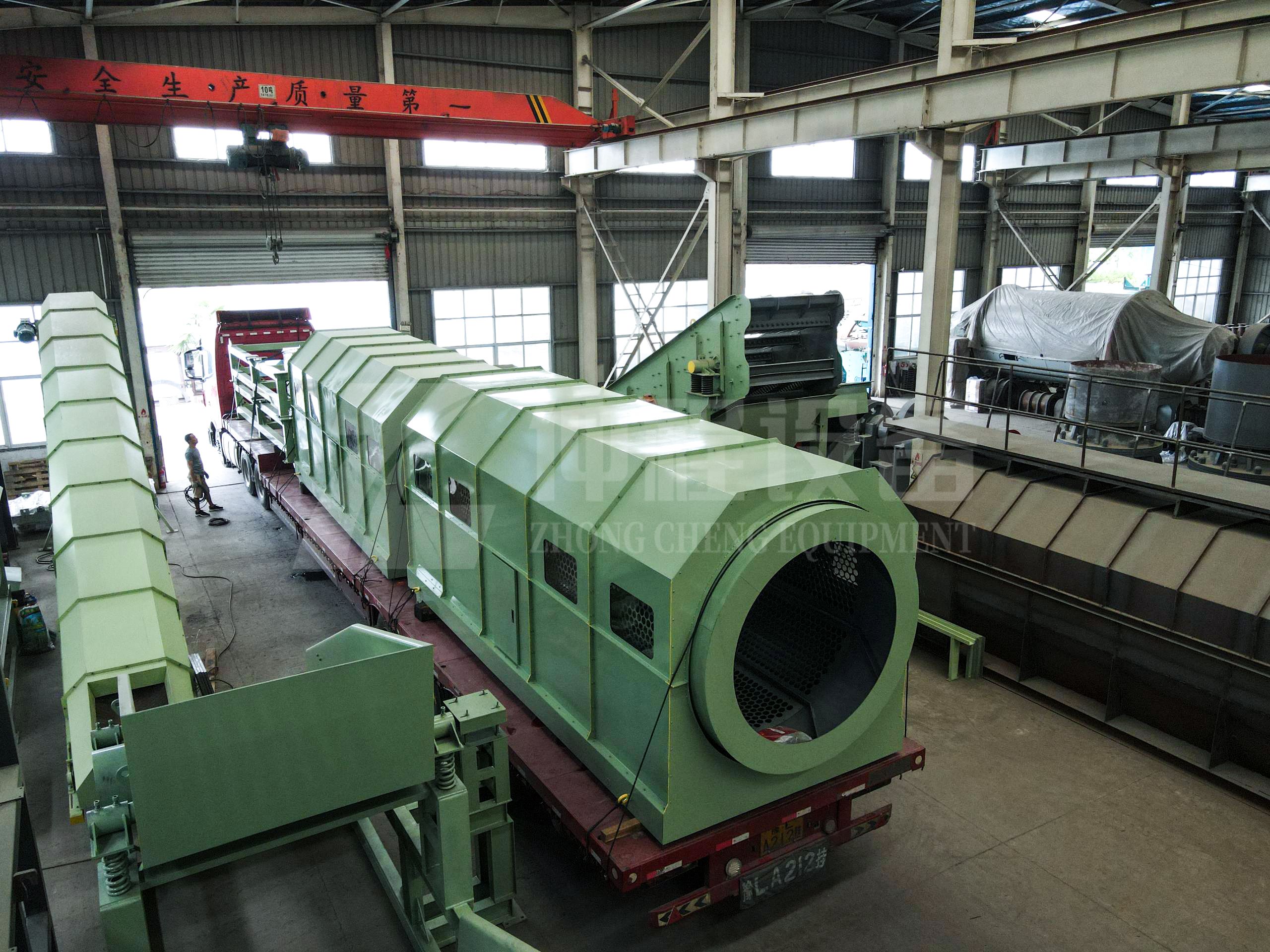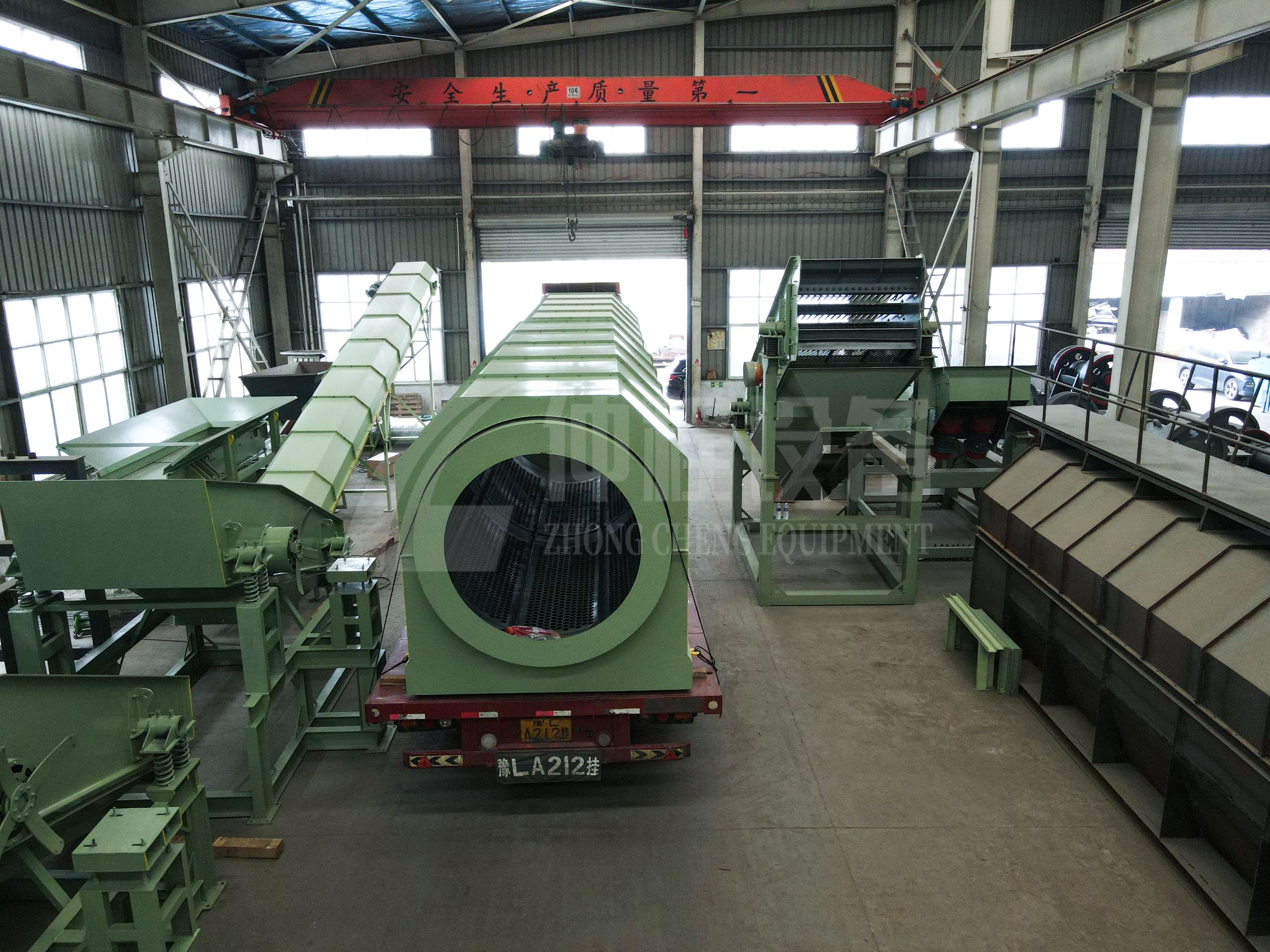The Essential Role of Drum Devices in Industry
In various industrial processes, separating materials by size is crucial for efficiency and productivity. This is where drum devices, also known as rotary screens or trommel screens, play an integral role. A drum device is a rotating cylindrical sieve or screen used to separate particles of different sizes. It operates on the principle of size exclusion, allowing smaller particles to pass through screen holes while retaining larger ones. Let's delve deeper into the workings of this fascinating equipment and explore its significance in material processing.

The Basic Structure and Functionality of a Drum Device
At the heart of a drum device is a large, cylindrical screen mounted on a frame. The drum itself is inclined at a slight angle, usually between 5 to 10 degrees, allowing gravity to assist in the movement of material through the device. The inclination ensures that as the drum rotates, the materials inside move from the feed end to the discharge end, much like a gentle rolling river.
The rotation of the drum is powered by an electric motor or engine, which turns the drum at a controlled speed. As the drum rotates, the materials inside it are lifted and dropped repeatedly. This motion causes the materials to tumble and turn, allowing smaller particles to fall through the screen holes and be collected below, while larger particles continue to travel along the length of the drum.
The Inclination and Rotation: Key Elements of the Drum Device
The inclination and rotation of the drum device are fundamental to its operation. The inclined position of the drum utilizes gravity to move materials along its length, aiding in the screening process. As the drum rotates, it creates a continuous cascading motion, turning and rolling the materials over the screen surface. This action helps expose all sides of the material to the screen, ensuring that smaller particles can easily fall through the screen holes.
The speed of rotation can be adjusted to suit the specific materials being processed. For finer materials, a slower rotation speed may be preferred to give particles ample time to pass through the screen holes. Conversely, for coarser materials, a faster rotation speed might be more effective, as it helps break up larger clumps and facilitates better separation.
The Screening Process: A Dance of Particles
Imagine a dance floor where particles are the dancers. The screen surface is the dance floor, and the drum device is the DJ orchestrating the music and tempo. As the drum rotates, particles of varying sizes perform a dance of separation. Smaller particles, nimble and agile, quickly find their way through the screen holes, disappearing into the collection area below. Larger particles, meanwhile, continue their journey, gradually making their way to the drum's end, where they are discharged.
This separation process is essential in industries where precise particle size is crucial, such as mining, agriculture, and waste management. In mining, for instance, drum devices separate valuable minerals from ore, ensuring that only the desired materials are extracted and processed further. In agriculture, they are used to sort grains by size, ensuring uniformity in the final product.

Applications of Drum Devices Across Industries
Drum devices have found applications in a wide range of industries due to their versatility and efficiency in material separation. Here are a few notable examples:
Mining: In mining operations, drum devices separate valuable minerals from ore. By removing unwanted materials, these devices enhance the efficiency of downstream processes and improve the quality of the final product.
Agriculture: In agriculture, drum devices are used for grain cleaning and sorting. They separate foreign particles, such as stones and debris, from harvested grains, ensuring the final product is clean and market-ready.
Waste Management: In recycling and waste management facilities, drum devices are employed to separate recyclable materials based on size. This process is vital for efficient recycling and waste disposal, reducing environmental impact.
Food Processing: Drum devices in the food industry help sort and grade products such as fruits, vegetables, and nuts. By separating items based on size, they ensure consistency and quality in packaged goods.
Advantages of Using Drum Devices
The use of drum devices in material screening offers several advantages that contribute to their widespread adoption in various industries:
Efficiency: Drum devices efficiently separate materials of different sizes, improving overall processing efficiency and productivity.
Versatility: They can handle a wide range of materials, from fine powders to coarse aggregates, making them suitable for diverse applications.
Cost-Effectiveness: Drum devices are relatively low-maintenance and cost-effective compared to other screening methods, reducing operational expenses.
Environmental Benefits: By enabling efficient recycling and waste management, drum devices contribute to environmental sustainability.

Challenges and Considerations in Using Drum Devices
While drum devices offer numerous benefits, there are also some challenges and considerations to keep in mind:
Screen Clogging: In some cases, materials with high moisture content or sticky properties may clog the screen holes, reducing efficiency. Regular maintenance and cleaning are essential to mitigate this issue.
Wear and Tear: The constant movement and tumbling of materials can lead to wear and tear on the drum and screen components. Periodic inspections and replacement of worn parts are necessary to maintain optimal performance.
Material Characteristics: Different materials have unique characteristics that can impact the effectiveness of drum devices. Factors such as particle size distribution, moisture content, and abrasiveness should be considered when selecting the appropriate drum device.
Conclusion: The Future of Drum Devices in Industrial Processes
Drum devices have proven themselves as indispensable tools in material screening, offering efficiency, versatility, and cost-effectiveness. Their ability to separate particles based on size makes them invaluable in industries ranging from mining to agriculture and waste management.
As technology advances, we can expect further innovations in drum device design and functionality. Enhanced materials, improved motor systems, and advanced control mechanisms will likely lead to even more efficient and precise material separation.
In conclusion, drum devices will continue to play a vital role in industrial processes, ensuring that materials are sorted and processed with precision and efficiency. Whether it's mining valuable minerals, cleaning grains, or recycling materials, drum devices are the unsung heroes behind the scenes, making it all possible.
FAQs
1. What materials can be processed using drum devices?
Drum devices can process a wide range of materials, including minerals, grains, waste materials, food products, and more. They are versatile and suitable for applications in various industries.
2. How does the inclination angle of the drum affect its performance?
The inclination angle of the drum affects the speed at which materials move through the device. A steeper angle may result in faster material movement, while a gentler angle allows for more extended exposure to the screen surface.
3. Can drum devices handle wet or sticky materials?
While drum devices can handle wet or sticky materials, these conditions may lead to screen clogging. Regular maintenance and cleaning are necessary to prevent blockages and maintain efficiency.
4. Are drum devices suitable for fine particle separation?
Yes, drum devices can be adjusted to accommodate fine particle separation by using screens with smaller hole sizes and adjusting the rotation speed to suit the material characteristics.
5. What maintenance is required for drum devices?
Regular maintenance for drum devices includes inspecting for wear and tear, cleaning screen surfaces, lubricating moving parts, and replacing worn components to ensure optimal performance.
-
 Trommel screenTrommel screen, also known as drum screens, are widely used in various industries for sorting and separating materials.Get Quote
Trommel screenTrommel screen, also known as drum screens, are widely used in various industries for sorting and separating materials.Get Quote -
 Crop straw double shaft shreddApplications:Biomass Energy Production: Shredded straw can be used as a feedstock for bioenergy plants to produce electricity or heat.Livestock Feed: Reduced-si...Get Quote
Crop straw double shaft shreddApplications:Biomass Energy Production: Shredded straw can be used as a feedstock for bioenergy plants to produce electricity or heat.Livestock Feed: Reduced-si...Get Quote -
 Zhongcheng Air Drum SeparatorAir drum separators effectively separate lightweight materials (e.g., plastics, paper) from heavier materials (e.g., metals, glass). This high efficiency is cru...Get Quote
Zhongcheng Air Drum SeparatorAir drum separators effectively separate lightweight materials (e.g., plastics, paper) from heavier materials (e.g., metals, glass). This high efficiency is cru...Get Quote
-
2024-05-18Mobile Jaw Crusher PlantMobile jaw crushing station is a novel rock crushing equipment, also known as mobile crushing station. The purpose of its design concept is to stand from the cu...
-
2024-05-28Garbage screening drum screenTrommel screen is consisting of five parts: drum, frame, hopper, reducer and motor.After the material goes into the drum, it is screened along with the rotation...
-
2024-05-18Jaw CrusherThe working principle of jaw crusher Although the jaw crusher has various structural types, its working principle is the same, that is, the material is crushed ...
-
2024-07-10msw trommel screen for waste recycling machineThis equipment is suitable for the particle classification process in all walks of life:The equipment is simple, easy to operate,and can be operated with a larg...
-
2024-10-23Solid waste recycling plantOur company engaged in waste sorting system . We are professional about waste sorting system . We have professional technical team. Professional technical team...



